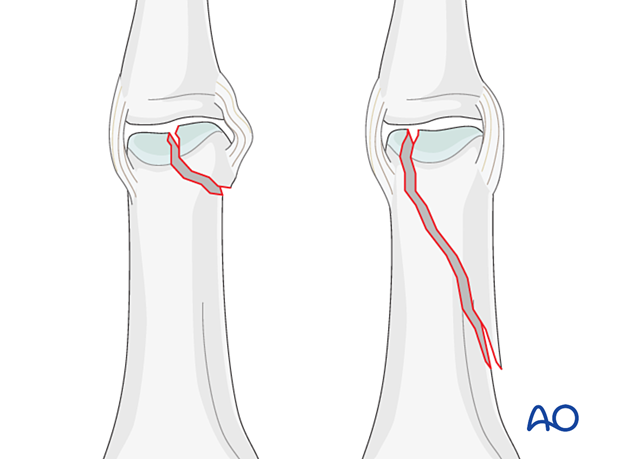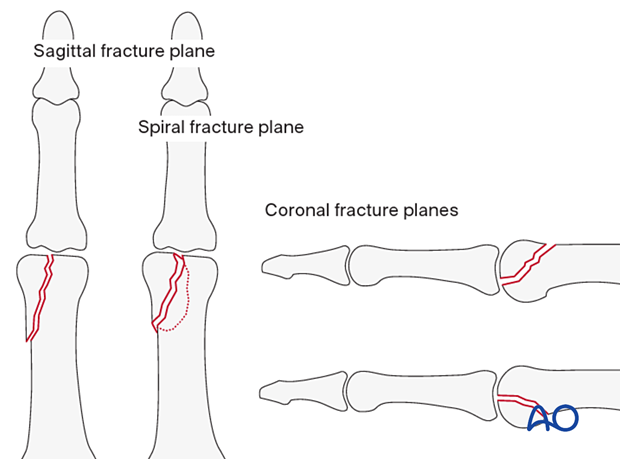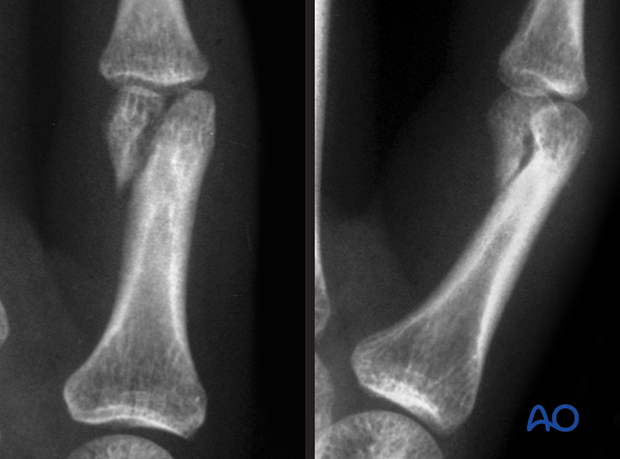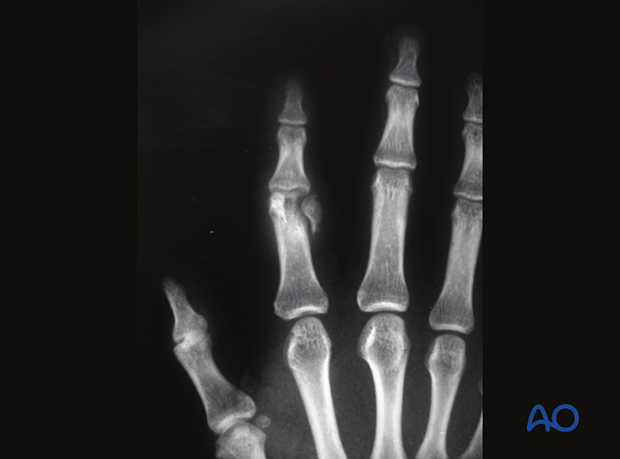Partial articular fracture of the distal end segment
Definition
Oblique articular (unicondylar) fractures of the proximal phalangeal head are classified according to AO/OTA as 78.2–5.1.3B, where 2–5 indicates which finger is injured.
Unicondylar fractures of the proximal phalanx can be short or long oblique or comminuted.
Short oblique fractures typically originate in the intercondylar notch.
Long oblique fractures more often originate through one of the condyles, splitting proximally towards the diaphyseal cortex on the side of the uninjured condyle.

Intraarticular fractures in the interphalangeal joints may lie in the sagittal plane or the coronal plane. Complex, eg, spiral, fractures may have multiple planes lying both sagittally and coronally.
Coronal fractures are unstable and usually associated with joint dislocations. See the section Dislocation and fracture-dislocation for further information.

Further characteristics
Typically, unicondylar fractures result from sports injuries caused by axial load combined with lateral angulation of the finger.
Condylar fractures tend to be very unstable because the ligaments usually pull at the fragments and displace the fracture.
Imaging
AP and lateral view x-rays of a unicondylar fracture of the 5th proximal phalangeal head

AP view of a unicondylar fracture of the 2nd proximal phalangeal head














